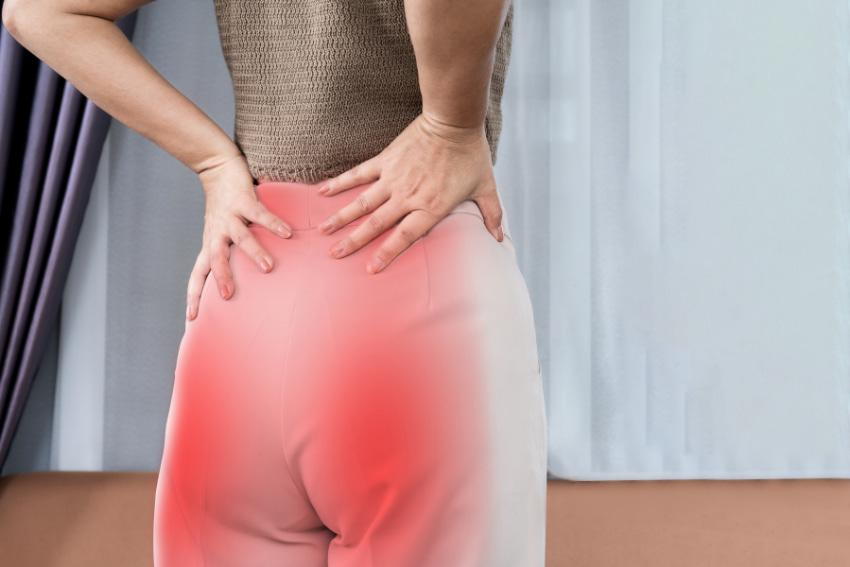
Effective Chiropractic Techniques for Sciatica Relief
- posted: Aug. 09, 2024
Sciatica affects 40% of people in the United States. It causes pain and difficulty in everyday movements like walking and standing.
If you are from Plantation, Florida, seeking safe and effective ways to manage your symptoms, this guide will help you understand how chiropractic techniques for sciatica treat your pain without costly and harmful side effects.
Sciatica Causes and Symptoms
Sciatica is a painful condition caused by irritation, inflammation, or compression of the sciatic nerve, originating in the lower back and extending down to the legs. It often results from spine conditions such as spinal stenosis, herniated discs, and osteoarthritis.
Sciatica feels like an electric shock or burning pain on one side of the body radiating along the sciatic nerve pathway. The pain can worsen when sneezing, coughing, or bending. Other symptoms of sciatica include numbness, tingling, and muscle weakness in the lower back and legs.
Diagnosing Sciatica
Healthcare professionals can diagnose sciatica by performing physical exams. The straight-leg test, in particular, where you lie on your back and lift your leg, can help pinpoint the cause of sciatica. Your healthcare provider may also ask you to walk.
To confirm the sciatica diagnosis, they may ask you to undergo imaging tests (e.g., X-ray, CT scan, MRI, myelogram), electromyography, and nerve conduction velocity tests. These tests are typically performed if no response to conservative care, such as chiropractic, helps with the pain.
Chiropractic Techniques for Sciatica Relief
Chiropractic care focuses on diagnosing and treating musculoskeletal disorders, particularly those involving the spine. Using hands-on techniques, chiropractors aim to alleviate pain, improve function, and promote the body’s natural ability to heal. Let's explore some specific chiropractic techniques used to relieve sciatica.
Spinal Adjustments 
Spinal adjustments for sciatica help to realign the lower back, reducing pressure on the sciatic nerve. This technique can alleviate pain and improve mobility by addressing the root cause of nerve compression.
Flexion–Distraction Technique
The flexion–distraction technique involves gentle, rhythmic movements of the spine using a specialized table. This method helps to relieve pressure on the spinal discs and nerves, reducing sciatic pain and promoting better spinal health.
Decompression
Spinal decompression involves stretching the spine using a traction table or a similar device to create negative pressure within the discs. This technique can help retract herniated disks, relieving pressure on the sciatic nerve and reducing pain.
Complementary Therapies
Myofascial Techniques
Myofascial techniques involve applying pressure to the connective tissues to release tightness and improve blood flow. This therapy helps reduce muscle tension and alleviate pressure on the sciatic nerve, thereby relieving pain. These techniques can be applied not only in the back but also in the leg, where nerve pain can be present. Applying stretch through myofascial techniques can decrease the force of friction between fascial planes and muscles, allowing nerves to move more freely and decreasing the sciatic symptoms a patient may feel.
IASTM (Instrument-Assisted Soft Tissue Mobilization)
IASTM uses specialized tools to break down scar tissue and adhesions in the muscles and fascia. This technique promotes healing and improves mobility, which can reduce sciatic nerve irritation and pain.
Modalities
 Modalities refer to various therapeutic techniques used to relieve pain and promote healing. These methods can be used in conjunction with other treatments to enhance their effectiveness.
Modalities refer to various therapeutic techniques used to relieve pain and promote healing. These methods can be used in conjunction with other treatments to enhance their effectiveness.
Ultrasound uses sound waves to generate deep heat, promoting tissue healing and reducing inflammation.
Electrical stimulation applies electrical impulses to nerves and muscles, reducing pain and improving muscle function.
Ice/heat therapy alternates between cold and warm treatments to reduce inflammation and relieve muscle tension.
Photobiomodulation
Photobiomodulation therapy, better known as laser therapy, can provide stimulus to the cells in the nerve and muscle, triggering repair. Laser therapy converts light energy to chemical energy, stimulating the mitochondria, the “powerhouse” of the cells, which increases cellular repair. Cells in our body have light receptors known as chromophores, which absorb light and make the cell more excitable. This allows the stimulation of cellular repair, promoting quicker healing time for injuries such as sciatic nerve irritation.
Rehabilitation
Rehabilitation exercises involve general stretching, core muscle strengthening, and aerobic exercises. These help improve flexibility, strengthen the supporting muscles, and enhance overall stability, which can alleviate pressure on the sciatic nerve and reduce pain. Examples include the glute bridge, clamshell, bird-dog, and cobra stretch.
Preventative Care and Maintenance
If a nerve is irritated, time is a factor that can help the healing process. While most people see improvement in pain within 4–6 weeks, lingering sciatica pain may be present. Treatment may be spaced out, which leads to preventative care. These adjustments help maintain optimal nerve function, reduce muscle tension, and prevent the development of conditions that can lead to sciatic nerve compression.
In addition to chiropractic adjustments, there are several other strategies that can help prevent sciatica.
Maintain good posture. Proper posture reduces the strain on your spine and helps keep the vertebrae in correct alignment.
Maintain a healthy weight. Keeping your weight within a healthy range lessens the pressure on your lower back and spine.
Quit smoking or vaping. Nicotine impairs blood flow to the spine, increasing the risk of disk degeneration and nerve damage.
Balance rest and activity. While in recovery, alternating between rest and low-impact physical activity keeps your muscles strong and flexible, which reduces the risk of nerve compression.
Takeaway
Sciatica pain can be debilitating. Although it is common, there is no reason you should have to endure it. Chiropractic is an effective treatment and an early intervention to treat pain before considering medication or surgical procedures. Dr. Eric Stumpff of Stumpff Chiropractic uses various chiropractic techniques for sciatica to provide long-term relief, helping you get back to living your life to the fullest.
Don’t let sciatica pain hold you back. Take the first step toward wellness. Call (954) 368-4054 to schedule an appointment.
Our Locations
Stumpff Chiropractic
7860 Peters Rd Suite F-111
Plantation, FL 33324, US
HOURS OF OPERATION
9:00 am - 1:00 pm
3:00 pm - 6:30 pm
9:00 am - 1:00 pm
3:00 pm - 6:30 pm
9:00 am - 1:00 pm
3:00 pm - 6:30 pm
8:00 am - 1:00 pm
9:00 am - 1:00 pm
3:00 pm - 5:00 pm
Closed
Closed

